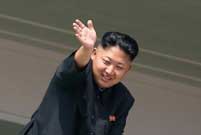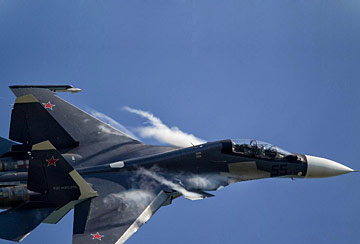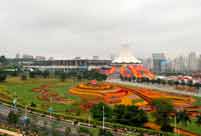The Ministry of Defense has issued a number of statements on the question whether China should build its own domestic aircraft carriers. The latest states that the "Liaoning" is China's first aircraft carrier of China, but it will not necessarily be the only one. Military expert Yin Zhuo said in an interview that one aircraft carrier alone would be unable to meet the demands of medium/high-intensity combat.
During a routine Ministry of Defense press conference in August, a journalist observed: "According to media reports, China is already building its first domestically-produced aircraft carrier – which would be China's second aircraft carrier - through the Dalian Shipbuilding Industry Corporation. The news that China is going to build a new aircraft carrier has been widely reported by many foreign media."
The Ministry of Defense spokesman, Yang Yujun, responded: "We have said that the 'Liaoning' is China's first aircraft carrier, but it will not necessarily be the only one. We will plan the development and construction of aircraft carriers according to the requirements of defense and military development, and we will take into account all relevant factors."
Yin Zhuo said that the reply of the spokesman of the Ministry of Defense should be interpreted from a military perspective. Aircraft carriers have maintenance cycles - intermediate maintenance should be carried out after about two years in service, and a major overhaul is required after several more years, at which point the aircraft carrier will be out of service for more than a year. If a country has only one aircraft carrier, this will limit its ability to conduct any combat mission during this period. If overseas threats are limited enough to permit the absence of the aircraft carrier for an extended period, one carrier may be sufficient. But generally speaking, it is sensible for a country to have at least two aircraft carriers. If there is a requirement for one aircraft carrier on permanent stand by for operations, there should be at least two carriers available.
According to Yin Zhuo, a single aircraft carrier will struggle to meet the demands of medium/high-intensity combats missions. In normal combat, replenishment of fuel and water is required every three to five days, and ammunition every five to six days. But in the case of high-intensity combat, the ammunition requirement may rise to every three to five days, similar to the requirements of fuel and water. Ammunition is replenished by air, generally by means of helicopters, and fuel and water are replenished by sea. Shipborne aircraft cannot operate during the refueling process.
Since the aircraft carrier is in a war zone, it should retire to the edge of the war zone for replenishment. Clearly the enemy does not apply the idea of an 'edge' to the war zone, and will therefore launch its attacks whenever it discovers the carrier. Therefore, a double aircraft carrier battle group is usually needed, in which one carrier covers the other. Since the replenishment of aircraft carriers takes a relatively long period of over 8 hours for the whole formation, and shipborne aircraft are unable to take off or land during this period, this represents a significant limitation to the combat abilities of the carrier. Therefore, carrier battle groups are usually deployed in formations of two carriers. This is always the case in the U.S.
 DPRK holds military parade to mark 65th founding anniv.
DPRK holds military parade to mark 65th founding anniv. Highlights of MAKS 2013 Int'l Aviation and Space Show
Highlights of MAKS 2013 Int'l Aviation and Space Show  10th China-ASEAN Expo opens in Nanning
10th China-ASEAN Expo opens in Nanning Eagle Boy takes to sky to break another record
Eagle Boy takes to sky to break another record 12-year-old boy becomes pillar of the family
12-year-old boy becomes pillar of the family Eye-gouged boy receives blind rehabilitation in Shanxi
Eye-gouged boy receives blind rehabilitation in Shanxi Top 10 naked hotels in the world
Top 10 naked hotels in the world The most gorgeous Chinese women in the eyes of foreigners
The most gorgeous Chinese women in the eyes of foreigners A collection of bizarre rooftop buildings around China
A collection of bizarre rooftop buildings around China Residences of the royal house of Savoy
Residences of the royal house of Savoy China's frigate 'Bengbu'in fire training
China's frigate 'Bengbu'in fire training Fresh students 'forced' to register in university independently
Fresh students 'forced' to register in university independently 2013 Taiwan Int'l Tourism Expo kicks off in Taipei
2013 Taiwan Int'l Tourism Expo kicks off in Taipei Photo story: Take a gap year
Photo story: Take a gap year Nokia's Global Headquarters: visiting a declining empire
Nokia's Global Headquarters: visiting a declining empireDay|Week|Month